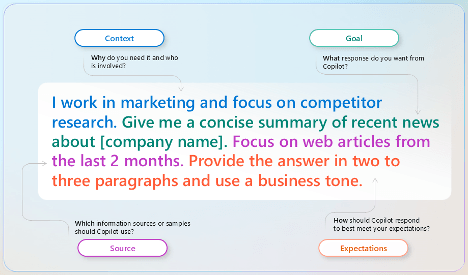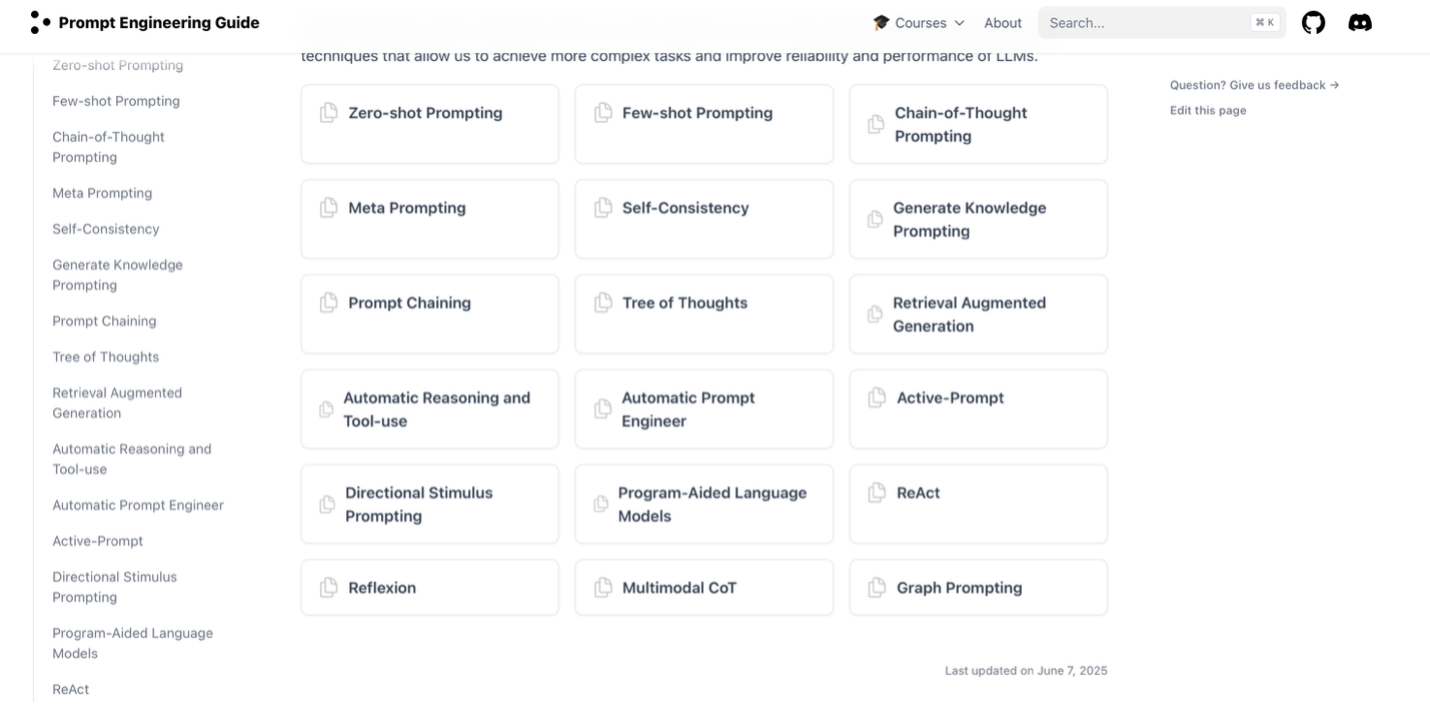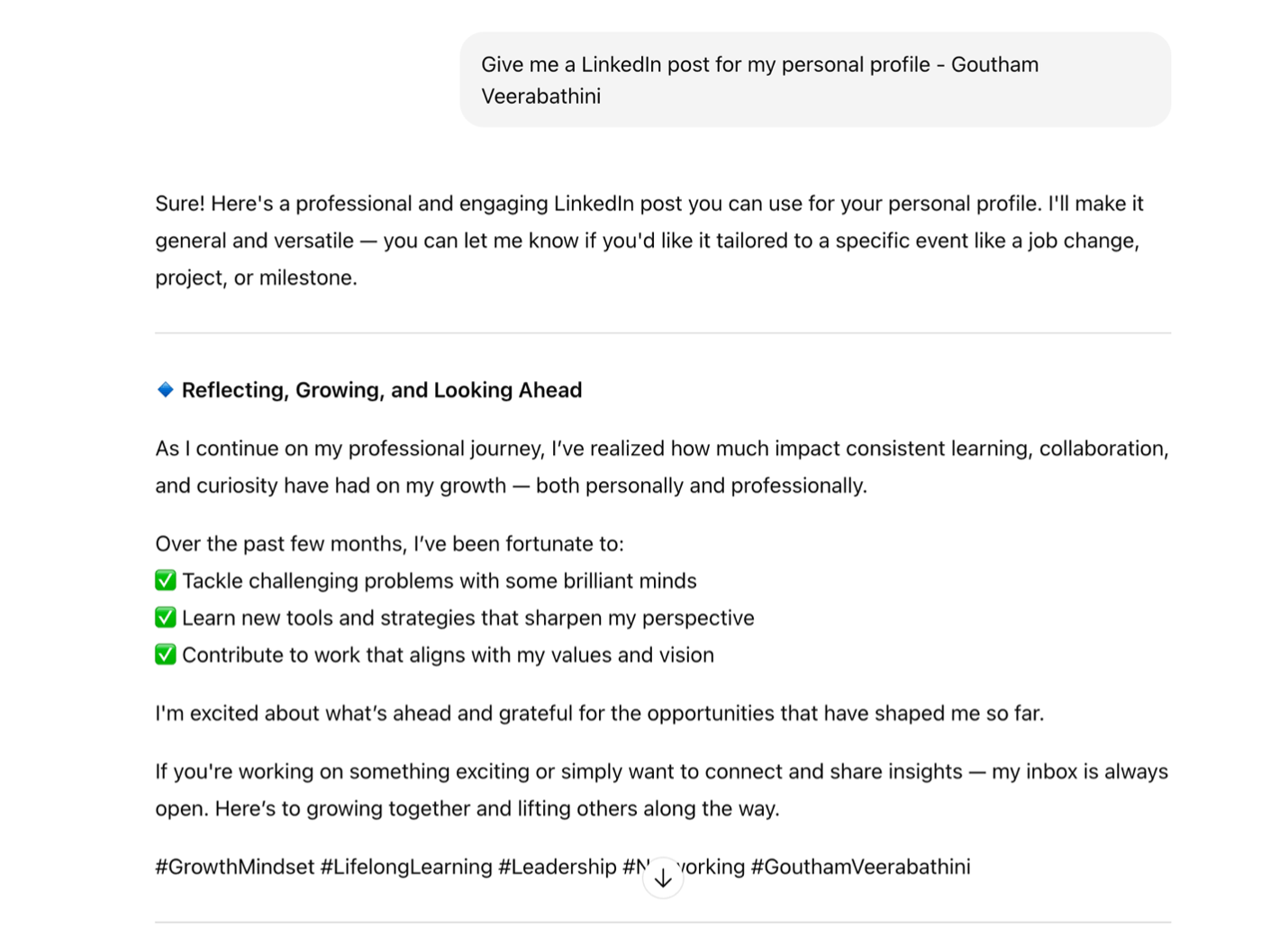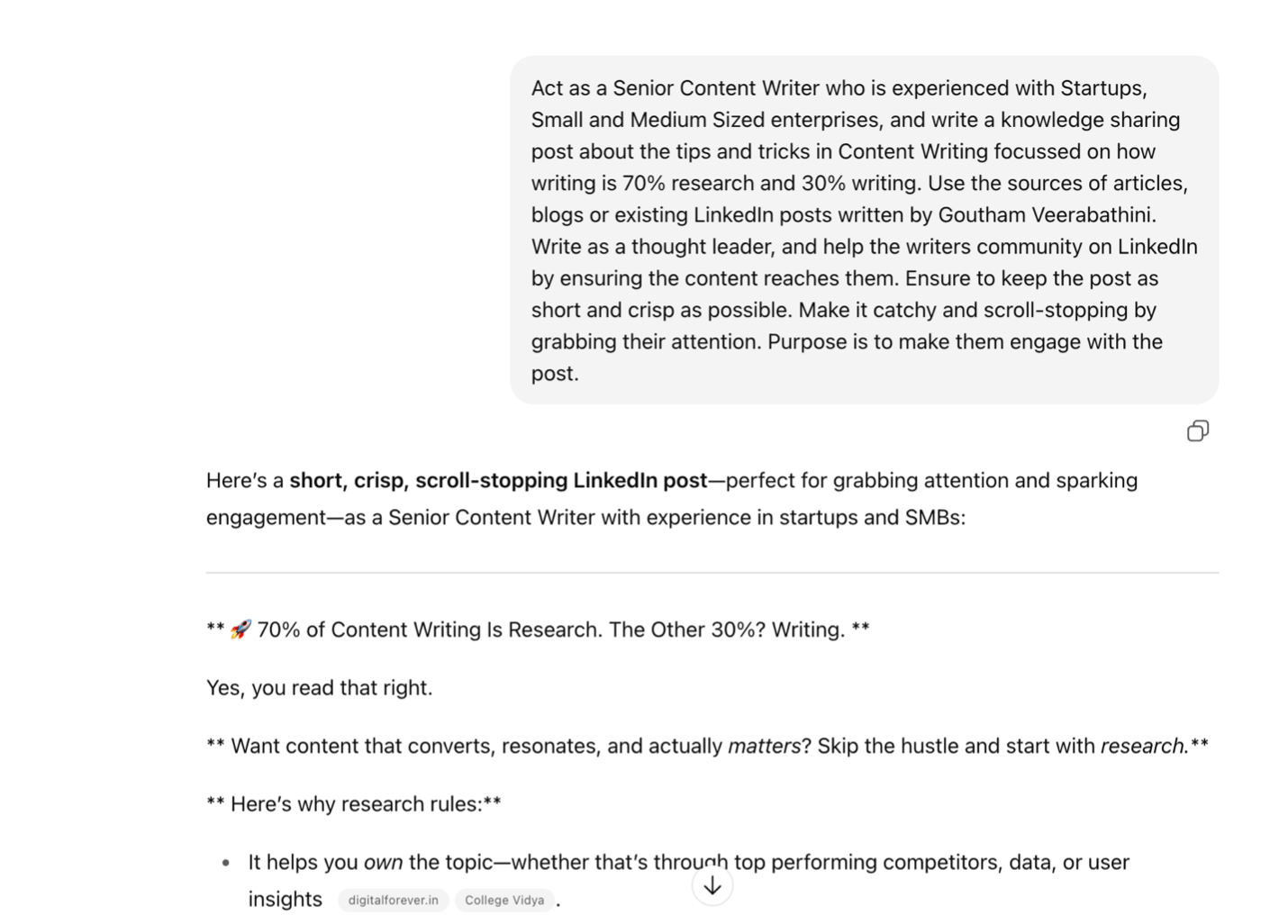How LLMs Work: A Practical Guide for Content Creators and Marketers to Master AI-Driven Creation

Talking to AI models like ChatGPT, Copilot, etc., is like asking an extremely smart person, “tell me about GTM.” They have no idea what exactly you are talking about – Go-To-Market or Google Tag Manager. They have no idea what you want unless you explain it clearly (with context). AI is powerful. No doubt in that. What it is not is psychic; it cannot read your brain (yet!).
The AIs like ChatGPT have Large Language Models (LLMs) in the backend that are a subset of Machine Learning Models. And most LLMs don’t “know” your intent. For content creators, marketers and anyone trying to use AI to write, ideate or automate, remember that these LLMs aren’t mind readers. They are mere pattern predictors.
Does it sound Greek and Roman to you? Let’s decipher in the most layman’s way possible.
What Is a Large Language Model (LLM), Really?
LLM is like a brain with infinite capability and capacity that’s trained on HUGE data sets. It can store the data and learn on the go while generating text, images, tables, code, etc. Like we just discussed in the introduction, it can be considered as a subset of Machine Learning algorithms that power the AI software program.
All the Generative AI, or GenAI, that we see today is a result of these LLMs that are enhanced by deep learning techniques. Most of these AI programs can understand and interpret Human language (unlike the binary computer language that is only understood by machines).
However, though it’s like a brain, the LLMs do not understand things in a human sense. They would rather work by completing the sequences using probabilistic determination of what could be the next logical step.
But, be cautious as LLMs aren’t always correct. It’s always better to have a human to analyze and decide if the information provided by the machine is accurate.
I am busting a myth here. Most LLMs DO NOT think or have memory of anything unless you specifically instruct it or it is designed that way, though they are often compared to a human brain.
So, if you want to understand how to play around with these LLMs, you must know that they are a pattern prediction algorithm built on huge pile of data. They give the output, based on the prompt you provide.
LLMs or AI is an Ocean of Knowledge, but CONTEXT is KING
We’ve been hearing that AI is taking away jobs from people. It is partially true and is needed. Few routine tasks that always have a pre-defined context do not make sense for humans to do it. So, we outsource that to an AI and put our brains to the greater use. However, for the tasks where the context varies and only a human has the context, AI becomes the lagging participant. And you must move a step ahead to think further, strive for the work that makes an impact.
So, whenever leveraging any AI model, the user-provided context becomes crucial. I’ll share a small example here.
Bad user-provided Context/prompt: “Write a social media copy for promoting the blog on LLMs and their context with respect to Content Creation.”
Rich user-provided Context/Prompt: “Write a social media copy in not more than three sentences for LinkedIn to promote the blog on LLMs and their context with respect to content creation, targeting the people for whom understanding AI and the LLMs becomes crucial, and are in the North American region. Keep the tone very casual and friendly while following an engaging narrative with a real-world fact or example. The goal is to make people stop scrolling and engage with the post. Below is the blog content.”
So, the reason why second one is rich user-provided context or prompt is because, you’ve given the source, context, expectation and goal:
- Goal – Social Media post for LinkedIn
- Context – Target audience and the tone of the content
- Source – Blog content
- Expectation – Three sentences post, which is engaging
“If you do not fill the gaps, AI will and trust me, that’s the last thing you want to do.”
For example, if you have given the first prompt, what if it assumes the content of the blog (which was shared in the previous conversation with the AI) which is totally different from the actual blog you want to promote?
Prompting the Right Way – Make LLMs Listen to YOU
Most content creators are slowly trying to be prompt engineers, and they must be to ensure that LLMs listen to you. A prompt is a way to convey to the LLM the output you want it to generate. When you give the right prompt, you can make LLMs summarize, create, edit or curate content.
Think of a prompt as an instruction you give to your assistant. The clearer the instruction, the better the result. Before we continue further with my input, I’d like to share a quick screenshot from one of the Prompt Engineering courses by Microsoft Copilot. Microsoft talks about four4 key factors that matter the most in a prompt:


Now, here are my inputs adding to what Microsoft already has mentioned:
The clearer, the better
You might be in a hurry to get the work done and give the most convenient, short prompt. Sadly, that doesn’t work with AI if you want to create content that you expect. The instruction must be wide and clear.
Long, clear prompts almost always outperform short and vague ones. We’ve already understood by now how these LLMs work and do not have the context but only have the content (huge knowledge they are trained on).
In your prompt, clearly include the goal, audience, tone, format, examples and more. If you already have an idea on how the output must be. You can share that with the LLM as a reference, and you’ll be amazed how quickly it gets adapted to the shared resources. I’ve once shared one of my posts as a reference, and it was amazing how the following outputs looked like a lookalike of me has written that!
Once that’s done, you’ll have to start assigning your assistant a role!
Role Assigning
Give your LLM a proper role, and it makes jobs of two entities easier – you and your AI. Use techniques like “Act as a…”, “Imagine you are a…”, or anything you’d love to experiment. For me, “Act as a …”, worked great. Fortunately, if you have come across a better prompt, please do share it with me.
So, I am, by experience, a long-form content writer. To write an ad copy, sometimes is a headache for me. It’s because I’ll have to keep the character limit in mind and other stuff. To use AI for this task of a copywriter, I’ve used the below prompt and it did work.
“Act as a senior copywriter for a SaaS brand whose target audience are performance marketers and write an ad copy on the importance of First Party Data using the resource - The Comprehensive Guide to First Party Data blog. End goal of the copy is to create curiosity in the performance marketer about first-party data and learn more.”
Till now, we’ve spoken as if it’s just a single-shot prompt that would get the job done. Unfortunately, it’s not as easy as said. For this reason, there are multiple ways of prompting, and below is just a few of them I’ve sourced from PromptingGuide AI.

But what actually works best?
Step-by-Step Prompting
If you have read the book Atomic Habits by James Clear, you’d know by now what I am actually going to talk about. Anyways, here’s the tea: “Break down large tasks into smaller stages.”
Recently, I was trying to get an AI Agent that could do a lot of work with complete automation. However, I had difficulty because I was trying to give the AI all at once and it was giving very mediocre results. Then, I broke the entire task down into multiple stages and started prompting one stage at a time in one chat. It sort of worked to an extent, though not as expected.
So, a better way is to prompt step by step. Even in this method of step-by-step prompting, you cannot expect each step to be a single-shot prompt. You should work closely with the AI to get the desired outcome.
Iterative Refinement
Iterative refinement is the same thing we discussed just above this. Working closely with AI for the desired result. Share feedback, train the model to let it adapt to your tone and make it your best personal assistant.
Just like how you get and give feedback to your colleagues or the team members you manage, or how you have conversations with your manager, work with AI on that collaborative space. Ask it to refine the content, provide feedback and edit together.
If you have any references in mind after its first output, you can definitely share the same with AI to get a better response.
Meta-Prompting
Like how I was talking about giving references, you can teach AI how to think first. And then you can ask it to generate the content of your desire. Mention this clearly in the prompt.
For example, you can have the prompt “Think through the key message … before writing the headline copy.”
Behind the Scenes: How I (ChatGPT) Actually Work with Prompts
Let’s do a roleplay. You are a human, and I am an AI. To talk to me, you give me a prompt.
This is what I do once you give me a prompt.

But if your prompt is vague, I might pick the wrong patterns — not because I’m dumb, but because I’m not you.
Coming out of the roles now. So, AI makes a lot of hallucinations if the prompt is vague as it will pick the wrong assumptions (patterns that can be anything from its data. For you, Excel might be an excel spreadsheet, but for AI, it might be the word “excel” itself which translates to being best in the task - excelling), and the output gets messed up.
Mistakes to Avoid - Quick Do’s and Don’ts
There are certain things you must keep in mind while working with AI. I’ve listed a few of them below:
Don’ts
- Do not rely on AI to “just get it”
- Do not ask without clarity (e.g., “Give me ideas” without providing topic/context)
- Never ignore providing additional instructions about the tone or audience persona
- Do not try to get your result in one shot
- Never use jargon or slang that AI is not aware of (For example, I call Progress WhatsUp Gold as WUG. AI might not be aware of this.)
- Try to not give conflicting prompts as it may result in a very poor outcome
- Do not assume AI knows it all
Do’s
- Provide context and be clear always with every single prompt
- Use the GECS framework provided above for your reference – Goal, Expectation, Context and Sources to be shared in every prompt to the AI
- Always think of iterating or refining output instead of trying for a one-shot result
- Make it a mandatory practice to cross-check the information provided by AI as it might hallucinate despite the clear prompt
Quick Tip: Think of an AI as a child who has a memory of an ocean but can do only one task at a time and does ONLY what you say. For example, if you tell a child, “Mix sugar in the dough for the cake,” they’ll take the quantities of their own or they will ask you. But the AI doesn’t ask. It only assumes and maybe gives the result of a small cake piece or a huge one, not the one you expected.
Prompt-Response Comparisons: A Side-by-Side Comparison
I’ll show you the difference between a poor output and a high-quality, on-target outcome.
Vague prompt → poor output
Prompt: Give me a LinkedIn post for my personal profile - Goutham Veerabathini
Output: Poor output that doesn’t cater to my audience

Well-written prompt → high-quality, on-target content.
Prompt: Act as a Senior Content Writer who is experienced with Startups, Small and Medium Sized enterprises, and write a knowledge-sharing post about the tips and tricks in Content Writing focused on how writing is 70% research and 30% writing. Use the sources of articles, blogs or existing LinkedIn posts written by Goutham Veerabathini. Write as a thought leader and help the writers’ community on LinkedIn by ensuring the content reaches them. Ensure to keep the post as short and crisp as possible. Make it catchy and scroll-stopping by grabbing their attention. Purpose is to make them engage with the post.

You can use the same, even to generate codes or anything you wish with AI. The above example is focused on only written content, but AI is much more capable than just writing social media posts.
Beyond Prompting – The Creator’s Edge
Did you notice the above prompt? I’ve told the AI what post it must focus on or emphasize on – 70-30 in content writing. Therefore, you must understand one thing very clearly - LLMs can’t replace human creativity, voice or original thought.
You must use AI as a collaborator, and not a crutch. It aids you in speeding up your processes and eases your job. Think of it like a mixer or a grinder. In the olden days, the grinding or mixing was done using a hand and a lot of effort. Today, you have machines that can do that work. However, it is you who must decide what ingredients you want to put into the grinder, how much water to add to make the batter for meeting the consistency of your choice, and more!
So, your job is to curate the direction, infuse originality and give the context. Once you do these, it is the AI that takes it up from there to make your job easy. The LLMs might get things wrong even after you provide the context, source, goal and the expectation. So, please make a judgment to use or not use the content generated by AI.
To put it simply, “Your job as a content creator is to: Curate the direction, infuse originality and make judgment calls AI cannot.”
Final Thoughts – Content + Context = Creative Power
AI and LLMs are the machines trained on huge data designed to follow your lead. You can only unlock the true potential of AI in content creation when you understand how it works and feed it with the right context.
So, if you want great results, it starts with you: your clarity, your context and your creativity.
Whether you’re a content creator, marketer or just curious about using AI better, remember, the better your prompt, the better the output. Treat AI like your assistant, not your savior. It can support your work, accelerate your process and even surprise you with insights, but only if you give it the right direction.
In the end, the real power isn’t in the model. It’s in how you use it.
So, go ahead—experiment. Refine. Rewrite.
What’s the next prompt you’ll rewrite with more intention?

Goutham Veerabathini
Content Curator (AI Powered)
